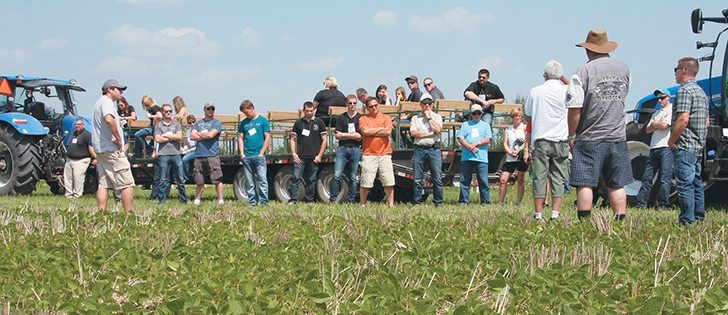INDIAN HEAD, Sask. — Saskatchewan soybean acreage nearly doubled this year, and researcher Garry Hnatowich sees no sign that the trend will stop.
The research agronomist from the Irrigation Crop Diversification Centre at Outlook, Sask., said an estimated 300,000 acres were planted this year, up from 170,000 last year.
“It is exceeding chickpea and fababeans combined,” he said at a recent field day in Outlook. “There certainly is interest in this crop.”
The increase comes despite a lack of research specific to the province and Hnatowich’s admission that he’s not sure how much Manitoba data is applicable to Saskatchewan.
Read Also

Farming Smarter receives financial boost from Alberta government for potato research
Farming Smarter near Lethbridge got a boost to its research equipment, thanks to the Alberta government’s increase in funding for research associations.
Manitoba growers have far more experience with soybeans and can grow varieties with a maturity rating of 00.
“We (Saskatchewan) will require a 000 maturity rating, but we’re not there yet,” he said at a field day in Indian Head. “But I’m optimistic that the companies are moving in the right direction.”
Twenty-five varieties are under test this year in the search for those that will mature before frost.
Seeding dates are critical.
Soybeans can’t be planted early because they require warm soil temperatures, but the earliest maturing varieties require 120 to 125 growing days.
“Germination initiation does not occur until soil temperature is nine degrees,” Hnatowich said.
Seeds will swell from 13 to 50 percent moisture within four hours of planting, he said. If it’s too cold, the seed will rot.
A seeding date trial includes six seeding dates, beginning with the first week in May and ending the second week of June. Early results this year indicate the May 21 planting rate was the best, but Hnatowich said there is still a lot of growing season.
This is the first year of a three-year plant population trial, which includes populations of 120,000, 160,000, 200,000, 240,000 and 280,000 plants per acre.
“My gut tells me somewhere between 180,000 and maybe 200,000 (will be optimum),” Hnatowich said.
However, it is just the first year of the trial and more study is required.
Another study is looking at row spacing and solid seeding.
Hnatowich said it fits well with the plant population study because most farmers will be solid seeding their soybeans with existing seeding equipment rather than using planters.
The trials at Indian Head were direct seeded into standing stubble and were looking good late last month.
“I would have rolled this,” Hnatowich said about the crop he was observing because it would make the field easier to harvest.
An inoculant trial includes granular inoculant on its own at different rates, in combination with liquid inoculant and in combination with seed treatments.
Hnatowich said soybeans are oilseed legumes rather than pulses and aren’t great nitrogen fixers.
For example, fababeans fix 90 percent of their nitrogen requirements and peas and lentils about 80 percent. However, soybeans and dry beans fix only 50 percent.
In the United States, where 82 million acres of soybeans are grown, less than one-third of the acreage receives an inoculant, Hnatowich said. Growers believe that enough rhizobium builds up in the soil over time.
However, longer rotations in Canada likely remove that benefit.
Hnatowich said it likely costs $125 per acre to grow soybeans.


















